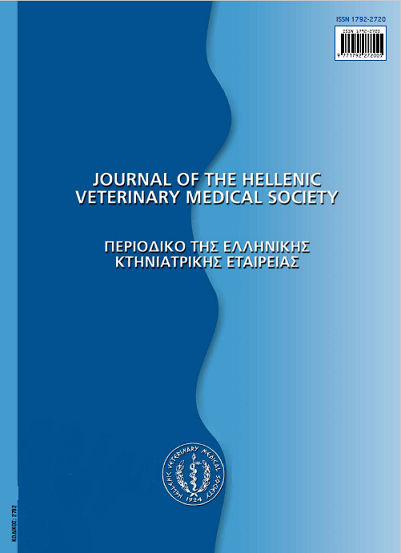Mycobacterial infections of fowl

Abstract
The significance of mycobacterial infections of birds may have been decreased considerably by the broad application of modern farming practices, but their study continues to be important with reference to fowl, animal and public health protection. Mycobacterial infections of birds are mainly caused by members of the Mycobacterium avium complex (MAC). This is divided into 28 serotypes that are grouped into species: serotypes 1 to 6, 8 to 11 and serotype 21 consist the M. avium subsp. avium (MA), serotypes 4 and 8 are also referred to as M. avium subsp. hominisuis, whereas serotypes 7, 12 to 20 and 22 to 28 consist the Mycobacterium intracellulare. Serotypes 1 to 3 of MA are the only ones that cause systemic tuberculosis in chickens. M. intracellulare and the rest of the serotypes that consist MA usually cause only focal tuberculous lesions. Recendy, another member of the Mycobacterium species, namely Mycobacterium genavense, has been added to those that can infect fowl. Cases of fowl mycobacteriosis have been reported from practically every place on earth. The disease usually enters a farm by carrier animals that excrete mycobacteria in their feces. The bacteria usually gain entrance into the host through the oral route and rarely through the upper respiratory tract. Sporadic incidences of sudden death, loss of weight and drop of egg production consist evidence of fowl mycobacteriosis in a farm. Clinical symptoms can also result from infection of the intestine, bones, lung or the skin. Tuberculous lesions located in the viscera and more significandy the bone marrow, when revealed during post-mortem examination, consist pathognomonic findings. The diagnostic investigation of mycobacterial infections in the laboratory usually relies on serology, the microscopic examination of fecal smears and culture that continues to consist the method of reference. These are nowadays implemented by specific Molecular Biology methods, the most broadly applied of which is the polymerase chain reaction (PCR). Cultivation of clinical material for the isolation of mycobacteria begins with the decontamination of the sample that aims to neutralize the bacteria that would over grow mycobacteria. The product is then inoculated onto selective media. Those that are commonly incorporated to the cultivation of MAC are Lowenstein-Jensen and Middlebrook 7H11. Incubation is performed in 5-10% carbon dioxide atmosphere for no less than 4-6 weeks. Identification of colonies relies on biochemical tests or PCR that can decrease substantially the time required for a definite result. Identification of MAC by PCR is usually performed by targeting the following genomic regions: 16S rRNA, hsp65, IS 1245 and IS901. For M. genavense, that is genetically very closely related to MA, PCR is usually incorporated for the amplification of a region within the gene that codes 65kDa heat shock protein, proceeded by the digestion of the amplification product with the restriction endonuclease, SaR.
Article Details
- How to Cite
-
FRANGIADAKI (Ε. Γ. ΦΡΑΓΚΙΑΔΑΚΗ) E., IKONOMOPOULOS (Ι. Α. ΟΙΚΟΝΟΜΟΠΟΥΛΟΣ) J., BALASKAS (Χ. ΜΠΑΛΑΣΚΑΣ) C., & GAZOULI (Μ. ΓΑΖΟΥΛΗ) M. (2017). Mycobacterial infections of fowl. Journal of the Hellenic Veterinary Medical Society, 57(2), 127–139. https://doi.org/10.12681/jhvms.15017
- Issue
- Vol. 57 No. 2 (2006)
- Section
- Review Articles
Authors who publish with this journal agree to the following terms:
· Authors retain copyright and grant the journal right of first publication with the work simultaneously licensed under a Creative Commons Attribution Non-Commercial License that allows others to share the work with an acknowledgement of the work's authorship and initial publication in this journal.
· Authors are able to enter into separate, additional contractual arrangements for the non-exclusive distribution of the journal's published version of the work (e.g. post it to an institutional repository or publish it in a book), with an acknowledgement of its initial publication in this journal.
· Authors are permitted and encouraged to post their work online (preferably in institutional repositories or on their website) prior to and during the submission process, as it can lead to productive exchanges, as well as earlier and greater citation of published work.


